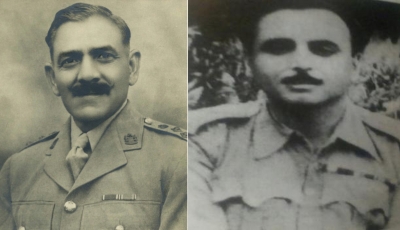The first soldier-saviours of Jammu and Kashmir (Part 1)
By IANS | Published: October 27, 2022 08:30 PM2022-10-27T20:30:04+5:302022-10-27T20:40:06+5:30
Right from August 1947, Pakistan had its eye on the princely state of Jammu and Kashmir, whose ruler had ...

The first soldier-saviours of Jammu and Kashmir (Part 1)
Right from August 1947, Pakistan had its eye on the princely state of Jammu and Kashmir, whose ruler had been vacillating on its political future. After subversion and blockade, the Pakistanis mounted a full-borne, though proxy, invasion by Pashtun tribals, who easily overran a considerable stretch of territory, but two gallant soldiers one each of the state forces and the Indian Army saved Srinagar from capture.
The actions of Brig Rajinder Singh Jamwal, the Chief of Staff of the state forces, and Lt Col Dewan Ranjit Rai, the commander of the first unit of Indian Army troops to reach the Valley, may have been tactical in scope, but they helped upset the invaders' schedule and forestall their advance, earn time for a political settlement, and subsequent pouring in and build-up of Indian forces.
Brig Rajinder Singh was ordered into action right after the tribal lashkar entered the state and captured and ransacked Muzaffarabad on October 22, aided by a mutiny of the state forces unit there.
A worried Maharaja Hari Singh called up the Brigadier that afternoon and ordered him to stop the raiders - "save the state till the last man and the last bullet" till help from the only available source - India - could be obtained.
Brigadier Rajinder Singh just saluted and walked away. He collected a body of men from the Badami Bagh cantonment - though why he took only a group, spanning 150 to 250 odd, as per various estimates - out of the over 1,000 available, even after taking out a group of troops from Poonch whose loyalty was suspect, is not known.
His makeshift force reached Uri early on October 23, where they clashed with the enemy, though the latter's superior numbers forced them to withdraw - despite the Maharaja's command to hold Uri - back to Mahura and further. However, before retreating, Brig Rajinder Singh accomplished the destruction of the Uri bridge, which stopped the raiders who depended on motorised transport.
Over the next three days till October 26, Brig Rajinder Singh and his force fought a number of rearguard actions along the Jhelum Valley Road as they were forced to withdraw, and though they did not make much of an impact on enemy strength and intent, they severely disrupted the timeline and stopped them from an unhindered advance down to an unprotected Srinagar.
On October 26, as the force, severely depleted by now, was falling back towards Baramulla, the Brigadier was hit and severely wounded, and asked his men to leave him and withdraw.
He was placed under a culvert early on October 27, and that was the last ever seen of him - fulfilling his commitment to only let the enemy pass over his dead body. In the process, the raiders who planned to reach Srinagar by October 26 were only at Baramulla on that date.
Meanwhile, the four days grace Brig Rajinder Singh had obtained saw important developments, especially Jammu and Kashmir's accession to India on October 26, and the Indian government's decision to send troops forthwith.
It is here that Lt Col Dewan Ranjit Rai's role came into focus.
Amid the chaos and unsettled conditions across the newly-Independent India in the wake of the Partition and the communal blood-letting, most of the Army was placed on internal security duties and there was a small reservoir that military commanders could draw on to send to Jammu and Kashmir.
One of this was 1
Disclaimer: This post has been auto-published from an agency feed without any modifications to the text and has not been reviewed by an editor
Open in app